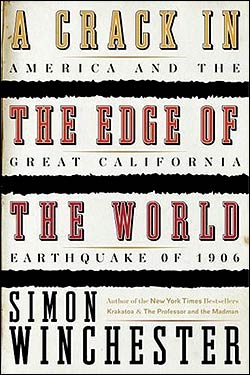You couldn’t ask for better publicity—or worse, for Louisiana readers—than what hurricanes Katrina and Rita have provided for Simon Winchester (see interview). Suddenly everyone is asking hard questions about the geographic hazards where they live, and that alone makes an important new book of his A Crack in the Edge of the World: America and the Great California Earthquake of 1906 (HarperCollins, $26.95). Important but frustrating. Winchester, an Oxford-trained geologist and veteran journalist who hit it big with his last natural-disaster tome, Krakatoa, tries to use the famed San Francisco quake as a lens to look at too many things at once—and Crack isn’t a very long book. The biggest lesson he wants you to absorb—and, yes, it feels like a lesson—is that of plate tectonics, old news to this reader and anyone else who took Earth Sciences 101 in college. (Intelligent design advocates can stop reading right now and start investing in the nearest flood plain.) In brief: Our continents have been slithering and sliding around for millions of years, colliding to form mountain ranges here, and crashing into earthquake-prone subduction zones there.
Nobody knew this in 1906, of course, or San Francisco might not have been built where it was. This is the second subject of Crack: how geography is, in some sense, destiny, which the settlement of America reflects. Using a road-trip conceit, Winchester motors to California, up to Alaska, and back to New York, stopping to elucidate quakes and catastrophes past. Some of his travelogue is pretty funny and informed, with a wit like his fellow Brit Jonathan Raban. (He threatens to marry a waitress for the quality of her rhubarb pie.)
Thirdly, and somewhat anticlimactically, there’s the San Francisco earthquake itself, for which he finds firsthand accounts and bits of color (Caruso getting dressed before fleeing his hotel), but this is already well, well reported ground. Winchester’s new insights are mainly speculation about the subsequent rise of Pentecostalism and Chinese immigration (all the old records burned in the post-quake fire).
I’d rather have read the science separate from the road trip separate from the disaster narrative—three different books he could’ve sold me.
Though he references the Banda Aceh tsunami, Winchester finished this book both too late (vis-à-vis San Francisco) and too soon (Katrina). Which, oddly, is all the more reason to go hear him speak on disasters nearer the present day.









